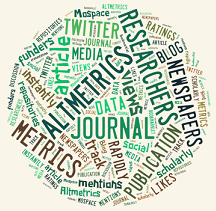In scientific publishing, the assessment of research impact has traditionally relied on citation-based metrics, particularly journal impact factors and h-index scores. However, these conventional measures provide only a limited perspective on a study’s broader influence. Alternative metrics (altmetrics) have emerged as a complementary approach, capturing the diverse ways research is disseminated and engaged with beyond academic citations. This shift is redefining how scholarly contributions are evaluated in an increasingly digital and interconnected world.
The Need for Alternative Metrics
While citations remain a fundamental measure of academic influence, they often take years to accumulate and primarily reflect recognition within the scholarly community. In contrast, altmetrics provide real-time insights into how research is discussed, shared, and utilized across different platforms. They include:
- Social media mentions (e.g., Twitter, LinkedIn, Facebook)
- News and media coverage
- Blog discussions and online forums
- Policy document citations
- Patent citations
- Public engagement through downloads and views
These metrics offer a more holistic view of research impact, particularly for studies that resonate with policymakers, industry leaders, and the general public.
Tools and Platforms for Altmetrics
Several platforms have been developed to track and analyze alternative metrics. Some of the most widely used include:
- Altmetric: Provides detailed insights into social and news media engagement, offering an Altmetric Attention Score to quantify impact.
- Plum Analytics: Aggregates data from citations, social media, usage statistics, and patents to present a comprehensive view of a study’s reach.
- Dimensions: Integrates multiple research impact indicators, including traditional citations and altmetrics, for a broader assessment.
These tools help researchers, institutions, and funding agencies track how scientific work is received and utilized outside of traditional academic circles.
Challenges in Implementing Alternative Metrics
Despite their advantages, alternative metrics face several challenges:
- Lack of standardization: Unlike citation-based measures, altmetrics vary across platforms, making direct comparisons difficult.
- Susceptibility to manipulation: Social media engagement can be artificially inflated, raising concerns about the reliability of these indicators.
- Field-specific relevance: Some disciplines, such as biomedical sciences, naturally attract more media and public attention than others, leading to potential biases.
- Short-term focus: Altmetrics often emphasize immediate engagement, whereas long-term scientific influence may take years to materialize.
Efforts are underway to refine these metrics, ensuring they complement traditional measures while maintaining rigor and credibility.
The Role of Altmetrics in Research Evaluation
As funding agencies, universities, and publishers seek more comprehensive ways to assess research impact, altmetrics are gaining recognition in research evaluations. They offer insights into:
- Public engagement and societal impact: Demonstrating how research informs public discourse and policy decisions.
- Interdisciplinary influence: Tracking the reach of studies across multiple fields and audiences.
- Real-time research dissemination: Allowing authors to gauge interest and adapt communication strategies accordingly.
Some institutions are incorporating altmetrics into tenure and funding decisions, recognizing that a paper’s influence extends beyond traditional citation counts.
Conclusion
The growing adoption of alternative metrics signals a shift in how research impact is perceived and measured. By capturing diverse forms of engagement and influence, altmetrics provide valuable insights that complement traditional citation-based indicators. As the scientific community continues to refine these metrics, they will play an increasingly important role in shaping research evaluation, funding decisions, and scholarly communication in the digital age.


